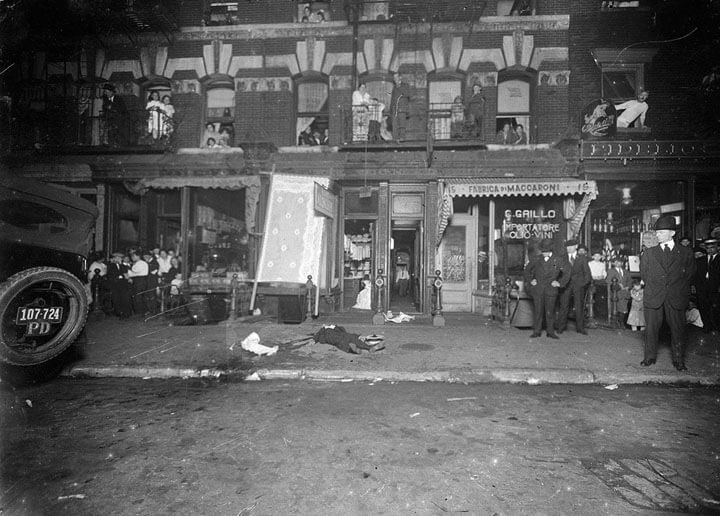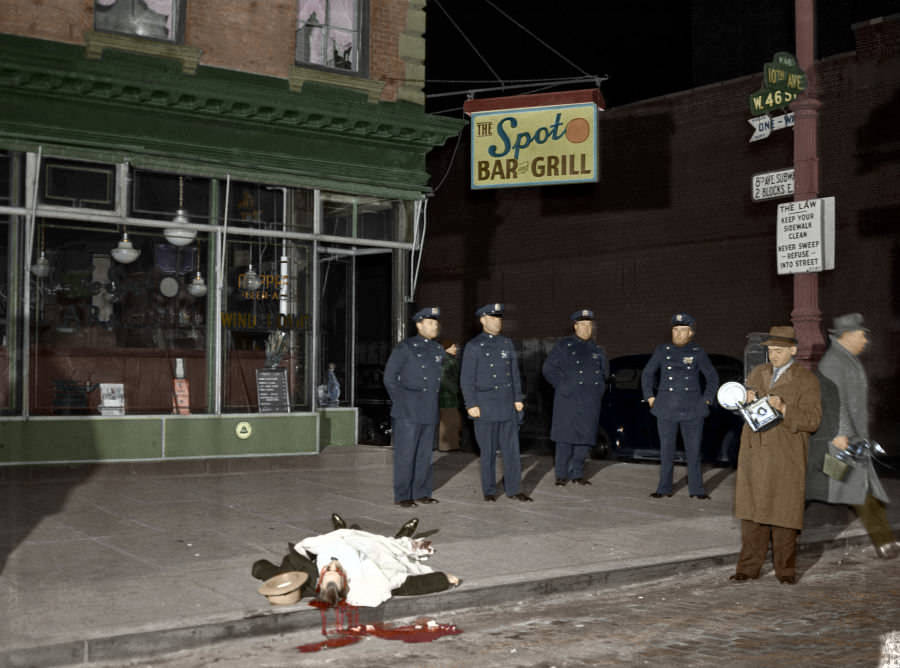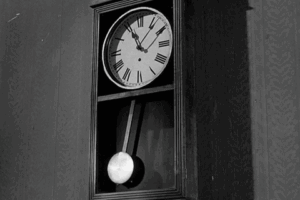There is an old saying regarding Cold Case Investigations:
“The suspect is hidden there in the original case file.”
Oftentimes, it was someone who was previously interviewed as a suspect or a witness, but cleared at the time. However, as years go by and perhaps new clues are unearthed, previously cleared suspects now look like good prospects.
What is the primary purpose of solving cold cases?
THE SAME AS NEW CASES: TO BRING THE PERPETRATORS TO JUSTICE AND TO PROTECT SOCIETY FROM DANGEROUS INDIVIDUALS
I have posted below a recent presentation I did regarding cold case investigations. I know you will find it useful in your writings, no matter your genre. So use the real deal facts below to use them in your works: perhaps have the detectives not follow protocol . . . or buck the system aka Dirty Harry . . . or slip up . . . or solve a cold case by following my protocol.
Lots of meat on the bone!
So, let’s get right to it.
There are three types of cold case re-openings:
- Media, family inquiry or procedural review. These are the least common type of reviewing cold cases
- Availability of new forensic testing
- Individual charged with a crime confesses, or another person arrested requests leniency for information on the open cold case
Cold Cases should be divided into (3) categories:
- Cleared by arrest
- Exceptional clearance (suspect is deceased)
- Not resolved (open)
Cold cases are most likely solved by:
- New witness information
- Availability of DNA evidence that could be submitted to CODIS or other database match
- New information provided by citizens or informants
- Availability of AFIS quality fingerprint evidence
- Availability of outstanding leads to pursue
- Links to other crimes
- New theories of motivation

Factors that Affect Clearance of Cold Cases (in order of importance):
- New witness information
- Availability of DNA evidence for CODIS or other submittal databases
- New information from citizens or informants
- Availability of AFIS quality fingerprint evidence
- Availability of outstanding leads
- Murder weapon recovered
- Suspect identified
- Projectile or casings recovered of quality to submit for ballistic evidence
- Potential for additional information from witnesses
- Serial crime pattern
- Victim has been identified
- Evidence was properly handled and stored over course of the investigation
- Case file is complete and readable
- Original investigator and his/her notes available
Tracking Open ACTIVE Cases
- Daily/Weekly Investigative functions: interviewing witnesses; querying investigative databases; preparing evidence for forensic testing; checking victim Facebook pages; checking Tipline leads; writing supplemental reports; reviewing original; file; speaking to initial investigator(s); Internet searches; checking prior suspects/witnesses for criminal history; travel; conducting a line-up; review medical examiner reports; developing new suspect(s) or MO; administrative tasks; departmental meetings; meeting with victim’s family members, etc.
Preventing Fatal Errors in Cold Case Investigations
A fatal error that commonly occurs is when a cold case was initially classified as a “missing persons” case due to a victim’s prior behavior, but later becomes a “suspicious” or “homicide” investigation. This also occurs when it may have been classified as a burglary, and the victim was found dead, but in reality the victim was murdered with the crime scene staged to appear as a burglary as well. This is done by the suspect to divert the police off the path of possible suspects. Most commonly this occurs when the suspect could easily be linked to the victim by the police.
- Scene is usually not properly documented
- Crime scene photographs/video not performed
- Crucial evidence not collected
- Crime scene not properly protected
- Evidence that is collected is not properly preserved
- Critical leads are not followed up

Scenario Example:
You are a police officer on patrol.
Robbie Runaway, age 17, has a prior history of being defiant toward his parents, abusing drugs, staying out late, using his older brother’s car without his permission, and frequently running away from home. He is known to hang with a group of drug suppliers 7-10 years older than him.
At 2315 hours, his parents call to report to your department that he did not come home from his night job after school as a Baker Prep Assistant for Panera Bread. His schedule for work is 4 p.m. until 10 p.m. He usually drives straight home after this shift, the ride being 30 minutes. Your department responds to his parents’ home, and based on his prior history, take a missing persons report. He was reported to have driven his own car to Panera. An officer contacts the Panera manager after hours who confirms Robbie did work his entire shift. At this time, no foul play is detected.
At 0120 hours a patrol officer in a town adjacent to Robbie’s home observes a vehicle that has been driven off the road and into a shallow culvert. The officer also observes the both driver’s side windows smashed, the engine off and the front passenger wide door open. The headlights are on. On the front seat is a cellphone, a sandwich in a Panera paper bag uneaten, 4 empty beer cans and a half empty can of beer. A crushed and opened pack of Parliament cigarettes was found on the ground next to the open passenger door, and a tire iron was found approximately 25 feet from the car in the culvert. The officer runs the license plate, records the information for his report and continues on patrol. He notifies your department; you in turn determine he must had left the vehicle after driving into the ditch. You notify his parents and arrange for the vehicle to be towed to their home.
Over the next 72 hours Robbie’s parents increasingly pressure your department to determine what happened to him. In the meantime, his parents brought his car to a repair shop and his windows were replaced.
One week after disappearance, an anonymous tip is sent to your department via e-mail from a computer in a local library that Robbie was involved in a sexual relationship with a female co-worker at Panera that was 34 years old and married. She had been confronted by her husband about this after her husband was told by a concerned neighbor who stated he saw Robbie and the co-worker embracing at the rear of the store in the past.
Your department interviews the female co-worker who denies the allegations. She admits that her husband did confront her, but she denied the affair to him as well. He told her that he was going to “kill that fuckin’ punk” but she did not feel he was serious about that comment.
Several employees interviewed at Panera stated that in the last week they had seen a dark-colored small sized pickup truck parked in the far end of the parking lot idling with its lights off at closing time. As it was not unusual for family members and friends to wait in the parking lot at night to drive other employees home, they did not report the matter.

You check the motor vehicle records and determine that the female co-worker’s husband drives a black Toyota Tacoma pickup truck. He is interviewed and denies being in the parking lot or any involvement.
Robbie’s parents contact the media and give interviews as to how your department is not doing anything to find their son, as you still feel he has run away from his problems after smashing up the car.
After 3 weeks had elapsed since Robbie’s disappearance, and pressure from the media and the town Mayor increases, the case is now classified by your department as “suspicious.” However, due to the initial classification, no photographs or video of the vehicle at the scene were taken; no securing of the vehicle was done; no processing of the vehicle interior or exterior was done; no evidence was collected either at the scene or inside the vehicle (cigarette pack, beer cans, tire iron, broken glass, etc.).
Scenario Results:
Valuable evidence has either been destroyed, not preserved, never collected, or tainted to the point that accurate lab results would be refuted in court by a defense attorney. Crime scene photographs and video do not exist. There were no crime scene diagrams performed. Your “missing persons” case has morphed into a poorly investigated “suspicious” one. The Governor has called for your department to be investigated by the FBI. Robbie’s parents sob to the media about how your department should be disbanded. And to add insult to injury, your department lost the police discount at Panera.
Murphy’s Law of Future Cold Cases:
It is ALWAYS better to have evidence you collected but MAY not need, than to WISH you had evidence you did NOT collect but later did need.

WORKING ON COLD CASES
Typical Investigatory Procedures: (some require approval from an Assistant District Attorney/Assistant Prosecutor/State’s Attorney for legality and procedural issues)
Review all physical evidence for either submittal or resubmittal. Advances in forensic science benefit a cold case. As the years have passed, a suspect’s fingerprints have entered AFIS, prints that at the time of the crimes were found at the scene but did not match anyone – because the suspect, at that time, was never arrested or printed for any reason, and AFIS didn’t exist. All physical evidence should be reviewed, and if never submitted, be submitted; if previously submitted, it should be evaluated for resubmittal for more advanced testing. Submit DNA evidence to CODIS. Review any ballistic evidence for submittal or re-submittal for analysis of striations/lands and grooves on shell casings.
- Social media: Establish a Facebook page for each victim. This allows people from all over the world to submit new photographs, information, etc. and allows information to be shared. It also lets the victim’s family know they are not forgotten by law enforcement. It is also a great way to track who visited and commented on the website for investigative purposes. Search Twitter for comments related to the victim – many individuals do not even think twice about what they tweet.
- Perform crime scene analysis & profiling. This will not give you a suspect’s name or face, but provides an investigative lead to who might have been involved. Establish victim risk from victim’s POV and from offender POV. The three key areas of victimology, crime scene analysis and evidence analysis should be thoroughly performed by creating a BEA (Behavioral Evidence Analysis). A detailed victim background is key. The victim is the most important piece of evidence at a crime scene or criminal investigation.
- Use current databases to track victim/witness offender association, such as ClearPoint, Regional Information Sharing Systems (RIIS), FBI/Law Enforcement Online (LEO), wage and employment databases, motor vehicle records, etc. to show prior address linkages, employment, etc. This might refute a person’s story that they never associated with the victim, and allow a reason for a re-interview.

- Track prior suspects/witnesses from date of crime to present for possible arrests. If so, re-interview. Contact the correctional facility or facilities where the suspect/witnesses was incarcerated and ascertain his cellmates during incarceration. Interview these cellmates for any information.
- Contact suspect’s places of employment for information on where the suspect may have gone on to work since the crime. Employment applications may list relatives, references, etc. previously unknown to law enforcement. From there, these individuals, as well as past and current co-workers, can be interviewed.
- Contact internal investigative units of in-state correctional facilities for information sharing among current inmates that may have knowledge of the crime.
- Interview previously uncooperative witnesses: ex-wives/ex-girlfriends, friends. It is possible that at the time, a girlfriend or wife did not want to cooperate, but now that they are an “ex” may be interested in coming forward.
- Stay positive! Don’t focus or dwell on the past missed chances or mistakes in the investigation. Instead, use these mistakes to motivate you to rebound and have success.
“Success is not final. Failure is not fatal. It is the courage to continue that counts.”




